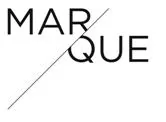Back in 2015, the Australian Institute of Company Directors issued
a challenge to the ASX 200 to meet a target of 30% female
representation on their boards by the end of 2018. Results
are in, and they came painfully close to achieving that goal, with
women accounting for 29.7% of all ASX 200 board positions at the
end of 2018.
While 30% might not seem like a very ambitious target, the trends
reported in the
AICD September – December 2018 quarterly report indicate
that there is hope yet for gender parity in Australian boardrooms.
Some particularly hopeful statistics that came out of the
report include:
- ASX 200 boards with more than 30% female representation more than doubled, from 40 to 96 boards.
- There are only 4 ASX 200 companies with no female directors (down from 26 boards in 2015).
- Of those companies that didn't make the cut, 78 need just one more female director to reach the 30% target.
Before we get carried away, let's look a little closer.
We still think 50% female representation is a more
appropriate target and we have doubts around how widely ASX 200
companies are looking when recruiting female directors. While
the AICD boasts that 70% of female directors hold only one board
seat, there are 9 directors who hold 4 different board seats on the
top 200 ASX listed companies (the most held by any director) and 8
of them are women.
While it is true that the top 200 ASX listed boards are
progressing, the
Chief Executive Women's 2018 Consensus shows only 7% of CEO
roles in the top 200 listed companies are held by women, while the
rest of the c-suite hovers around 12%. Given executives and
executive directors have a higher level of engagement and greater
commercial decision-making responsibilities than non-executive
directors, we suggest more emphasis should be placed on increasing
numbers at an executive level so that there is more substantive and
meaningful female board engagement across companies.
We're also concerned about the targeted focus on the top 200
listed companies considering the largest disparity exists in the
less-resourced small cap companies. Female representation in the
ASX 201-500 companies sits at less than 16%.
While the AICD's figures demonstrate a move in the right
direction, we also think there are plenty of areas to improve.
It's time to shine a light on small cap and private
companies who also need guidance and support in diversifying.
We do not disclaim anything about this article. We're quite proud of it really.


